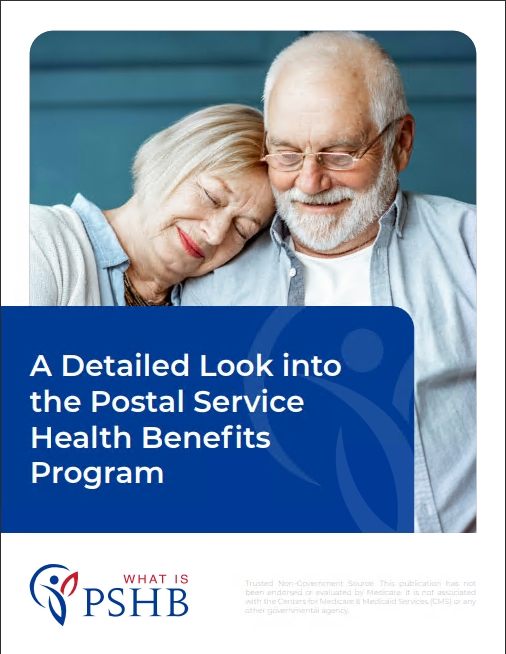Key Takeaways
-
Understanding eligibility rules for the Postal Service Health Benefits (PSHB) program is essential for ensuring uninterrupted health coverage for postal employees and retirees.
-
Eligibility requirements vary based on employment status, retirement status, Medicare enrollment, and qualifying family members.
The Basics of PSHB Eligibility
The Postal Service Health Benefits (PSHB) program is a dedicated health coverage option designed specifically for postal employees, retirees, and their eligible family members. This program replaces the Federal Employees Health Benefits (FEHB) system for the U.S. Postal Service workforce starting January 1, 2025. Whether you’re a current postal employee, a retiree, or a family member of either, it’s important to understand who qualifies and what steps you need to take to maintain your coverage.
Who Qualifies for PSHB?
Eligibility for PSHB depends on your current relationship with the Postal Service. Below is a breakdown of who’s eligible:
Active Postal Employees
If you’re currently employed by the U.S. Postal Service and eligible for FEHB, you automatically qualify for PSHB coverage. Your enrollment period typically aligns with the annual Open Season, or it can occur during qualifying life events (QLEs) such as marriage or the birth of a child.
Postal Retirees
Retirees who have retired directly from the Postal Service with eligibility for FEHB are also eligible for PSHB. This includes those who have chosen retirement under the Civil Service Retirement System (CSRS) or the Federal Employees Retirement System (FERS). Retirees must ensure their eligibility for health coverage by maintaining their connection to the postal service throughout their retirement.
Survivor Annuitants
Family members receiving survivor benefits from a postal retiree’s annuity may also qualify for PSHB coverage. This ensures that dependents and spouses of deceased retirees maintain their health benefits, as long as the deceased retiree met the program’s eligibility requirements before passing.
Medicare-Eligible Postal Workers and Retirees
For postal retirees and their family members who are eligible for Medicare, enrollment in Medicare Part B is a key requirement to maintain PSHB coverage. The program integrates with Medicare to reduce costs and improve benefits for retirees, but certain exceptions apply, such as for retirees who turned 64 before January 1, 2025.
Eligible Family Members
PSHB coverage isn’t just for postal employees and retirees. Certain family members may also qualify for health benefits under your enrollment:
Spouses
Your legally married spouse is eligible for PSHB coverage under your plan. This includes same-sex spouses and common-law spouses in states that recognize common-law marriages.
Children
Biological children, adopted children, stepchildren, and foster children are eligible for PSHB if they are under the age of 26. Adult children over the age of 26 may qualify if they are incapable of self-support due to a physical or mental disability that began before the age of 26.
Other Dependents
In some cases, other dependents, such as grandchildren or siblings, may qualify for coverage if they meet specific dependency requirements and live with you in a parent-child relationship.
Key Enrollment Periods for PSHB
Getting your timing right is critical when it comes to enrolling in PSHB. Missing key dates could result in a lapse in coverage.
Open Season
The annual Open Season typically occurs from mid-November to mid-December. This is the time when you can enroll in a PSHB plan, make changes to your current plan, or switch plans entirely. For the 2025 coverage year, Open Season ran from November 11 to December 13, 2024.
Initial Enrollment Period
If you’re a newly hired postal employee, you’ll have a 60-day window to enroll in a PSHB plan starting from your hire date. This is also true for newly eligible retirees or family members.
Special Enrollment Periods (SEPs)
SEPs allow you to make changes to your PSHB enrollment outside of Open Season if you experience a qualifying life event (QLE). Common QLEs include:
-
Marriage or divorce
-
Birth or adoption of a child
-
Loss of other health insurance
-
Moving out of your plan’s service area
Medicare and PSHB: How They Work Together
If you’re eligible for Medicare, understanding how it integrates with PSHB can help you make the most of your benefits. Medicare enrollment is required for certain retirees and their family members to maintain PSHB coverage. Here’s how the coordination works:
Medicare Part A
Most retirees qualify for premium-free Medicare Part A (hospital insurance). PSHB plans often coordinate with Medicare Part A to minimize out-of-pocket expenses for inpatient services.
Medicare Part B
Enrollment in Medicare Part B (medical insurance) is mandatory for Medicare-eligible postal retirees and family members to maintain PSHB coverage. Medicare Part B covers outpatient services, and the costs are often reduced under PSHB plans.
Medicare Part D
Prescription drug coverage under PSHB plans is integrated with Medicare Part D through a Medicare Part D Employer Group Waiver Plan (EGWP). This ensures that retirees have access to prescription drugs at reduced costs, with a $2,000 out-of-pocket cap for 2025.
How to Prepare for Enrollment
Making sure you’re ready to enroll in PSHB involves a few key steps:
Review Plan Options
PSHB plans offer varying benefits, premiums, and out-of-pocket costs. Reviewing your options during Open Season or a Special Enrollment Period can help you select a plan that meets your healthcare needs.
Gather Required Documentation
You may need to provide proof of eligibility for yourself or your family members, such as marriage certificates, birth certificates, or adoption papers.
Understand Deadlines
Mark important dates on your calendar to ensure you don’t miss enrollment periods or deadlines for submitting required documentation.
Special Considerations for Retirees
Retirees have unique needs and considerations when it comes to PSHB:
-
Medicare Integration: Ensure you enroll in Medicare Part B to avoid penalties and maintain PSHB coverage.
-
Transitioning from FEHB: If you were enrolled in FEHB as a federal employee, your coverage automatically transitions to PSHB, but you should still review plan options to ensure the best fit.
-
Coordination with Annuities: Your PSHB premiums may be deducted directly from your annuity, streamlining payment.
Avoiding Coverage Gaps
Lapses in coverage can be costly and stressful. Here are a few tips to avoid them:
-
Enroll During Open Season: Make sure to select a PSHB plan during Open Season to ensure uninterrupted coverage starting January 1.
-
Monitor Medicare Enrollment: If you’re nearing age 65, enroll in Medicare Part B on time to meet PSHB requirements.
-
Update Information Promptly: Notify your HR department or the Office of Personnel Management (OPM) of any changes in your life circumstances, such as marriage or the birth of a child.
Where to Get Help
If you’re unsure about your eligibility or need assistance with enrollment, resources are available to guide you:
-
OPM Website: The Office of Personnel Management provides detailed information on PSHB plans, premiums, and coverage options.
-
HR Department: Your local HR office can assist with enrollment and answer any questions about PSHB eligibility.
-
Medicare Assistance: Medicare’s helpline and website offer guidance on enrolling in Parts A, B, and D.
Navigating PSHB Rules with Confidence
Understanding the eligibility rules for PSHB can seem overwhelming, but staying informed and proactive ensures that you and your family maintain access to essential health benefits. Whether you’re an active postal worker, a retiree, or a family member, taking the time to review your options and meet enrollment deadlines is key to avoiding interruptions in coverage and maximizing your benefits.







